An intro into Biomaterials by Lara Campos
In week two and three, Lara Campos introduced us to biomaterials in two one-day sessions aimed at experimenting with a few basic recipes. Through that we managed to have a playful and practical approach into materials made out of food waste and other organic matter, exploring their varying structural properties and visual design. The material most iterated on, a pine resin based matter, including ground coffee (dried in the week before) and onion peels (collected and dried over the course of two days). This recipe was modified to also include hair, in order to increase the structural qualities of the material. The exact recipe used in the default material (seen below) consisted of 45g pine resin, 15ml alcohol, 5g carnauba wax, 10g of onion peels and 45g of ground coffee. Forst, we let the resin melt slowly and evenly in the pot, before adding the alcohol and the carnauba wax. Finally, while constantly stirring, we added the onion peels first and the coffee after. The properties of the outcome might be beautiful, but the material can only be described as brittle and fragile. Adding substantially more resin (alongside more carnauba wax and alcohol) would improve on the structural qualities. This is potentially due to the coffee creating a lot of volume and surface for the pine resin to cover. Therefore I would recommend using at least 60g of pine resin, 20ml alcohol, and 7-8g carnauba wax to compensate for the biomaterial mix and in order to get a more structurally integral material. There is the potential of further increasing the amount of carnauba wax to achieve a more elastic outcome, which can make the material break less when faced with punctual forces. Below, more details on the process, the outcome and the reflection can be found. Additionally, please find the full list of recipes via the button below.
Find all recipes here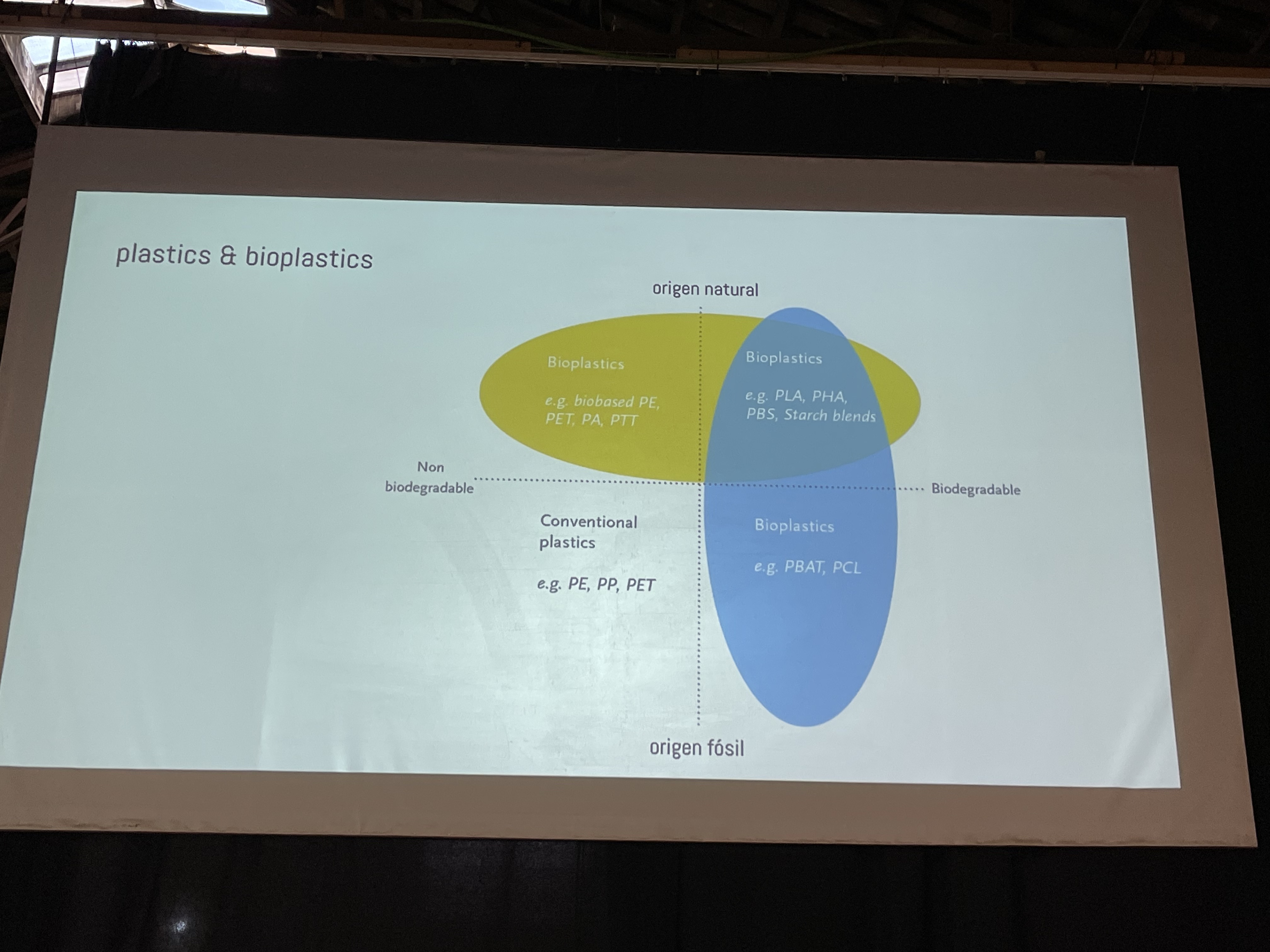
Not all bioplastics are biodegradable, not all bioplastics have an organic origin.

Experimental shoe design by Dasha Plesen using different colored bacteria and fungi cultures.
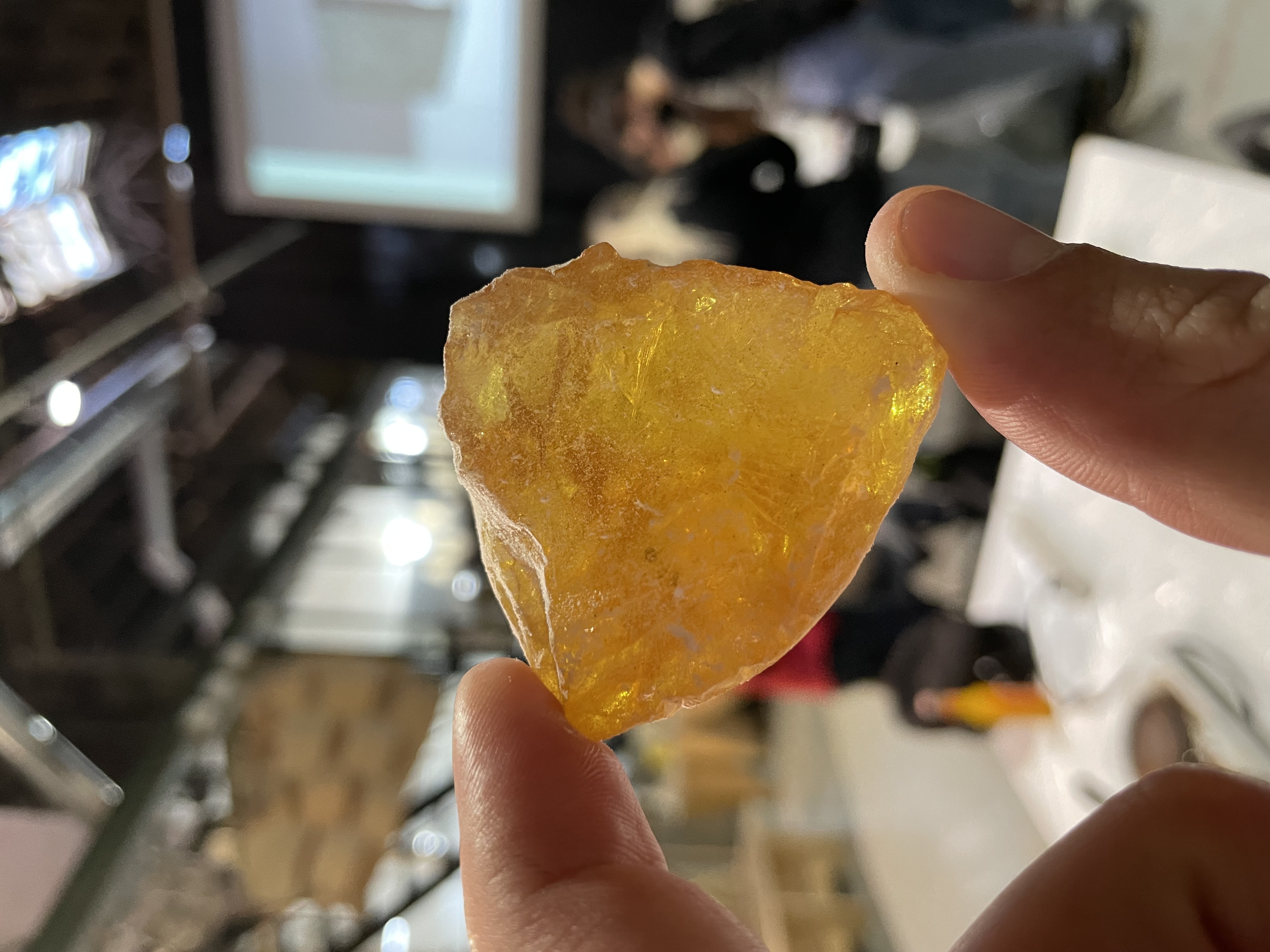
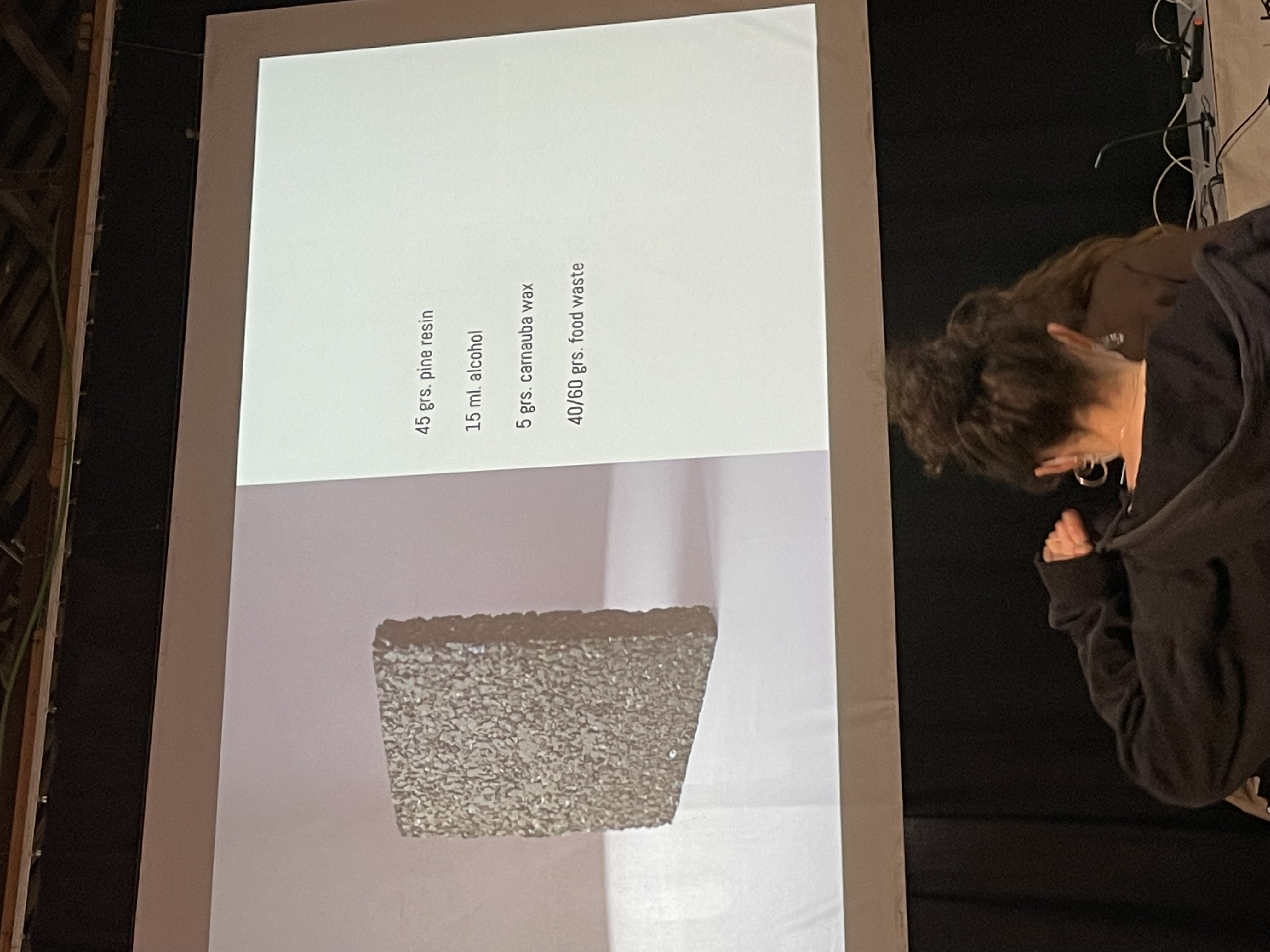


From raw material to finished sample (top right to bottom left): A beautiful chunk of pine resin; my favorite recipe from the class using pine resin as a base; mixing all the ingredients using high heat (above the carnauba wax' melting point at 80°C); the finished sample containing ground coffee and onion peels.
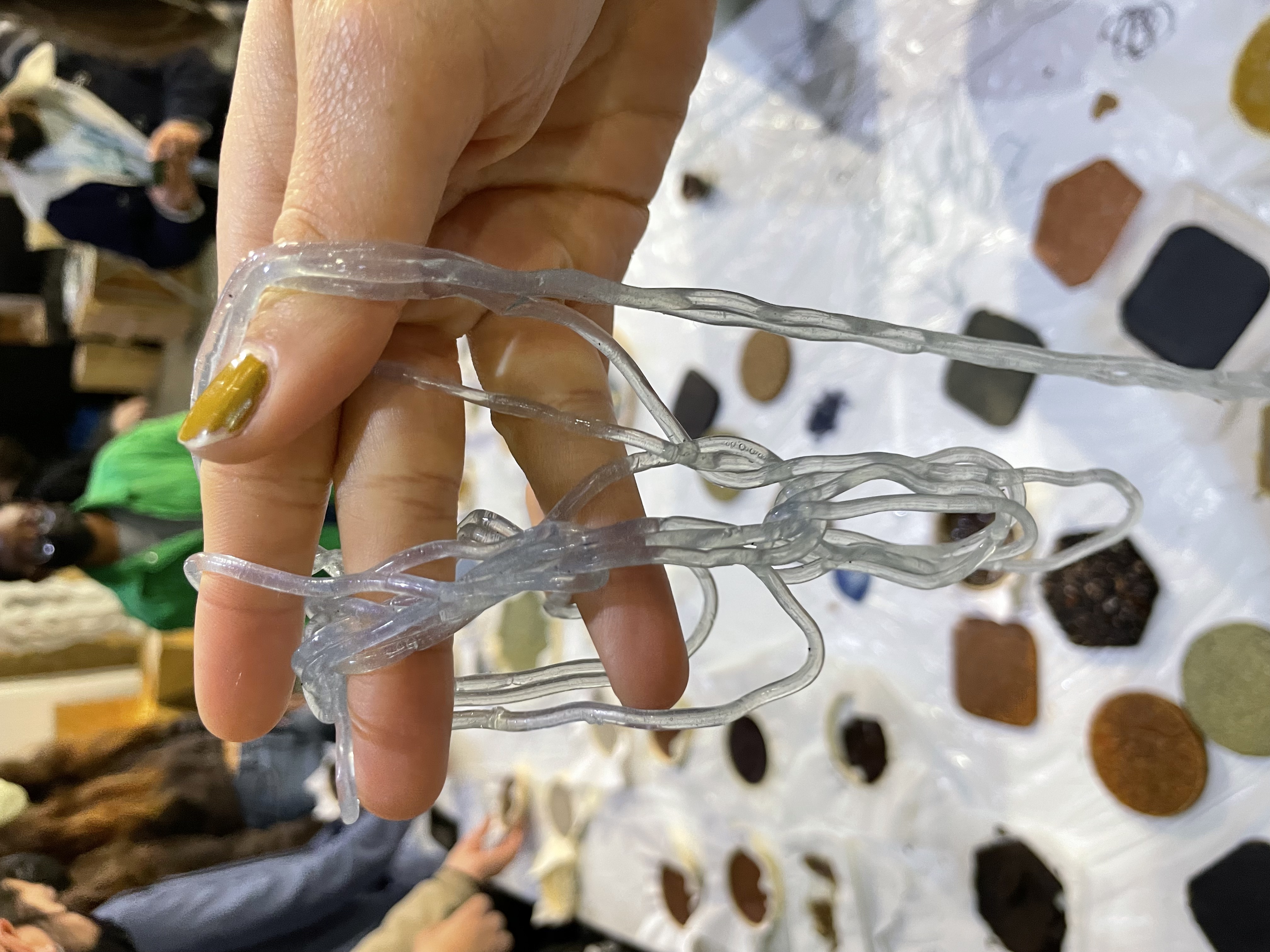

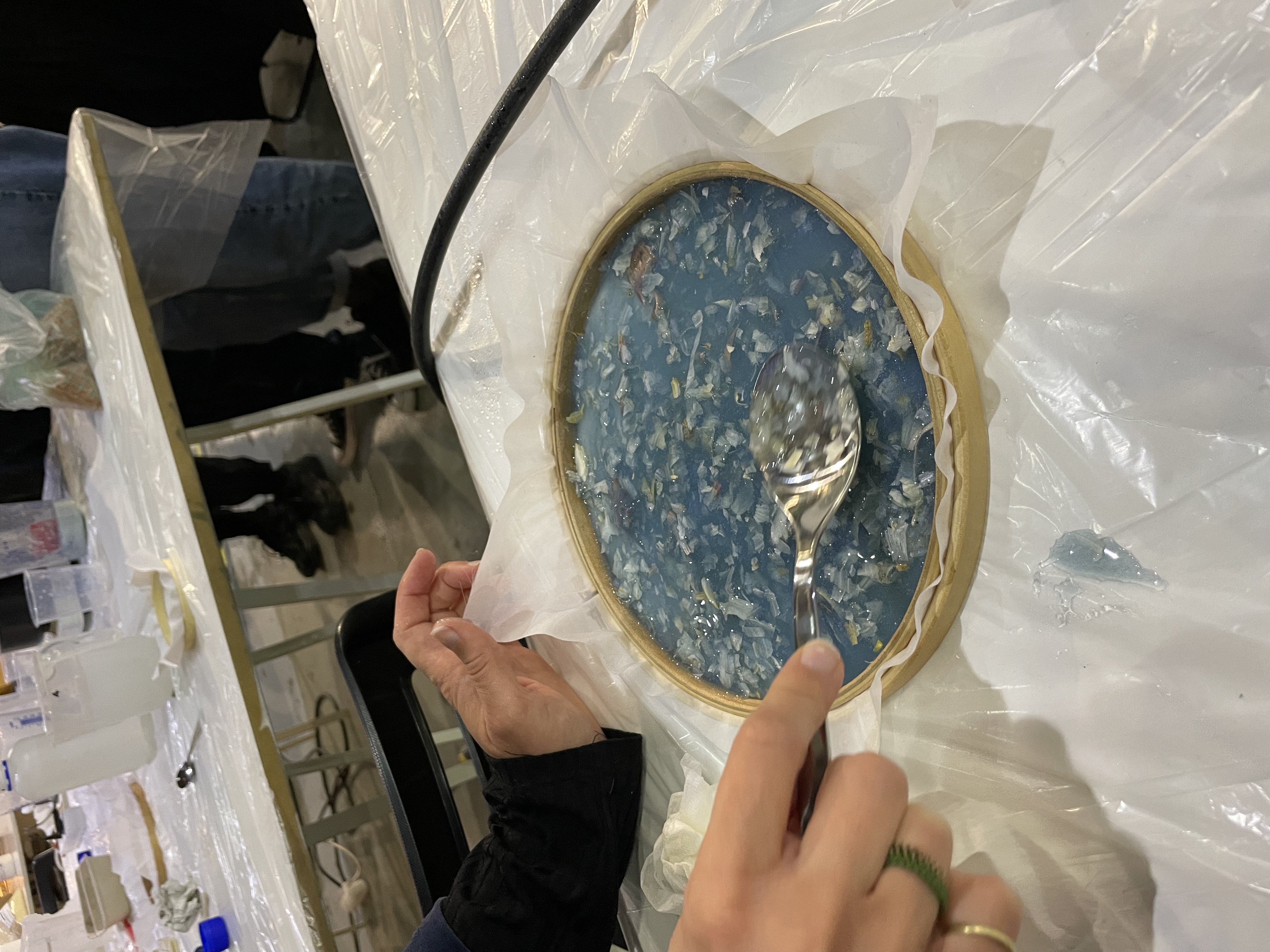
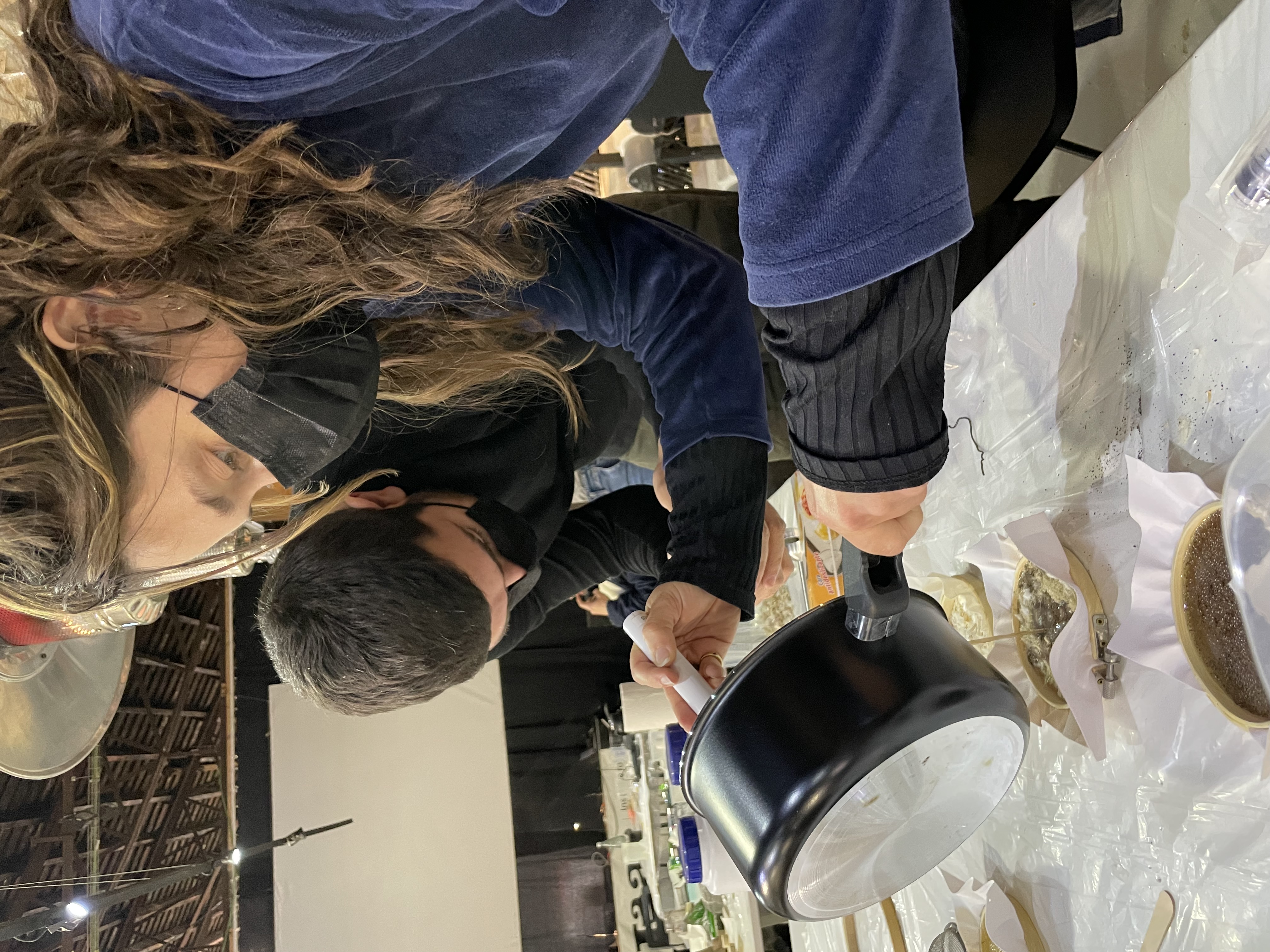
Different processes, different materials, different properties (from top left to bottom right): An alginate-based material hardened in CaCl, strung into flexible spaghetti-like strings; a sample based on pine resin, containing coffee and strands of hair for added durability; using agar as a base, together with blue mica powder and garlic peels, to achieve a wonderful blue texture; filling forms containing wool and food waste with agar and glycerin to create flexible, translucent sheets.
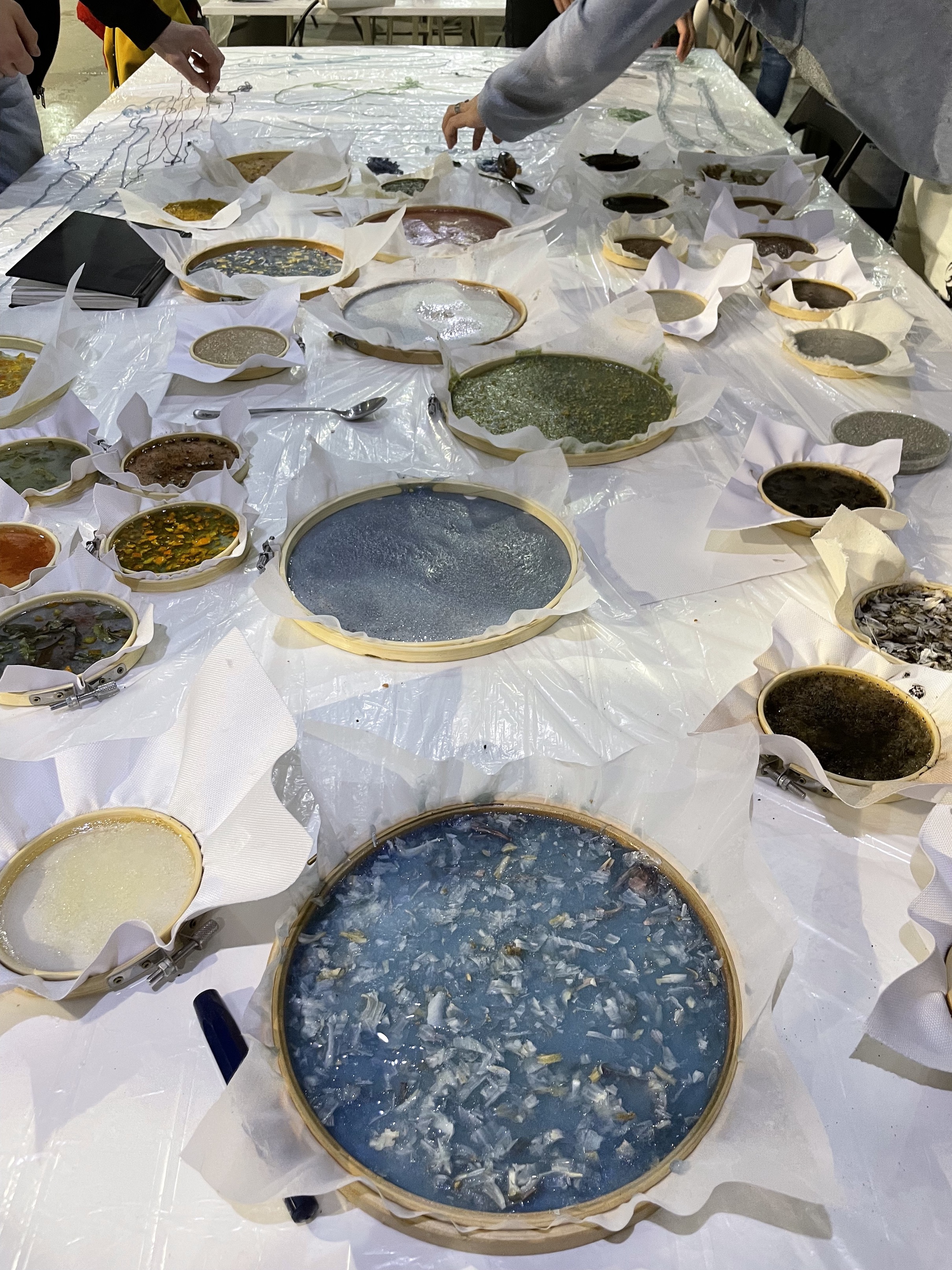
The collected works of the class after experimenting with agar-based materials, highlighting the variability of the recipe.
